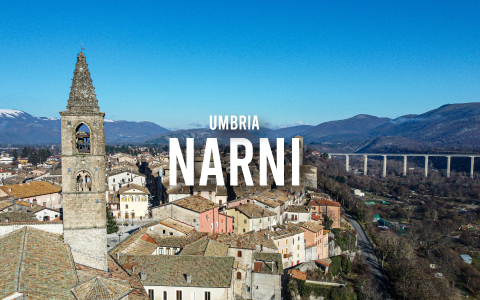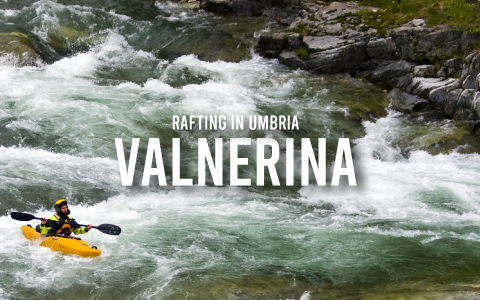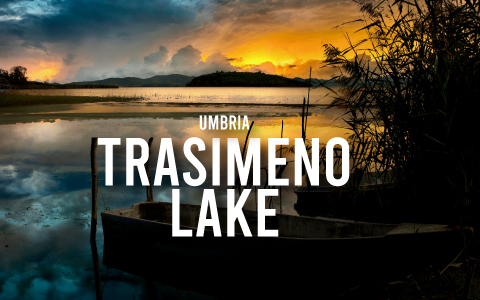
Stone, Silence, and Story: The Allure of Narni
Often referred to as the “green heart of Italy,” Umbria is a region of rolling hills, dense forests, and timeless towns where nature and history blend seamlessly. From the thunderous spectacle of the Marmore Falls to the serene beauty of Lake Trasimeno, and from iconic hill towns like Assisi and Orvieto to countless smaller villages rich in tradition, Umbria offers a deeply authentic Italian experience. Among its many treasures lies Narni, a medieval gem perched on a rocky outcrop above the Nera Valley. Less known than its famous neighbors, Narni surprises visitors with its immersive atmosphere, historical depth, and quiet charm.
Best Things to See in Narni
Founded by the ancient Umbrians and later Romanized under the name Narnia, the town has witnessed centuries of history, leaving behind an extraordinarily rich heritage. If the Latin name sounds familiar, it’s no coincidence: it inspired C.S. Lewis in writing The Chronicles of Narnia. And indeed, Narni is a place best explored slowly, one discovery at a time.
Here are some highlights you won’t want to miss:
The Rocca Albornoziana
Built in the 14th century as a defensive stronghold, this imposing fortress dominates the skyline and offers breathtaking views of the valley below. Today, it hosts exhibitions and events and is a perfect place to stroll among ramparts, towers, and gardens. Its well-preserved military architecture is a testament to Narni’s strategic importance during the Middle Ages.
The Duomo di San Giovenale
Dedicated to the city’s patron saint, this cathedral blends Romanesque and Gothic elements in a strikingly harmonious way. Inside, frescoes and artworks reflect the profound spirituality that has long permeated Narni. It’s an essential stop for those who appreciate sacred art and the quiet majesty of Umbria’s historic churches.
The Bridge of Augustus
Just outside the town center lie the monumental remains of this Roman bridge, which once spanned the Nera River. A marvel of ancient engineering, its majestic arches still stand, evoking the grandeur of Roman Narnia.
The Eroli Museum
Located in a historic palace in the town center, this museum houses a rich collection of archaeological finds, artworks, and documents that trace Narni’s long history. Be sure not to miss Ghirlandaio’s altarpiece of the Annunciation — a true Renaissance masterpiece.
The Churches of Sant’Agostino and Sant’Onofrio
These lesser-known yet deeply atmospheric churches are worth a visit. Sant’Agostino features Baroque decorations and frescoes, while Sant’Onofrio, built into the rock, offers a truly moving and intimate experience.
Underground Narni
One of the most unforgettable experiences in Narni is exploring its mysterious underground world. This guided tour takes you through Roman cisterns, crypts, inquisitorial cells, and forgotten churches — places that tell stories as fascinating as they are unsettling. It’s a powerful, immersive way to uncover the city’s hidden past.
Main Events in Narni
Narni is alive with events that celebrate both its medieval roots and its modern creativity.
The Corsa all’Anello (Race of the Ring) is one of Italy’s finest historical reenactments. Every May, the town comes alive: ladies and knights in period costume parade through the streets, medieval taverns open, and a spectacular jousting competition takes place, where knights demonstrate their skill and courage. It’s a vivid, engaging event that brings the town’s history to life.
Throughout the year, Narni also hosts concerts, exhibitions, and theater festivals — often held in remarkable venues like the Rocca Albornoz or the Teatro Comunale. Summer is ideal for enjoying these outdoor events, when Narni is at its most vibrant and welcoming.
Practical Information for Visiting Narni
The best time to visit Narni is from April to October. In particular, spring offer mild weather while Umbria in Autumn show marvelluos natural colors — perfect for exploring the town and surrounding landscapes. May is particularly special thanks to the Corsa all’Anello. Summer brings lively evening events but may be a little hot. On the other hand, winter offers a quieter, more introspective experience.
Getting there is quite easy. By car you can take the A1 motorway and exit at Orte, then follow the E45 toward Terni. By train, the nearest station is Narni-Amelia, with regular service to and from Rome (approx. 1 hour). From the station, the historic center is accessible by taxi or shuttle. The closest airports are Rome Fiumicino and Ciampino, both about 90 minutes away by car.



